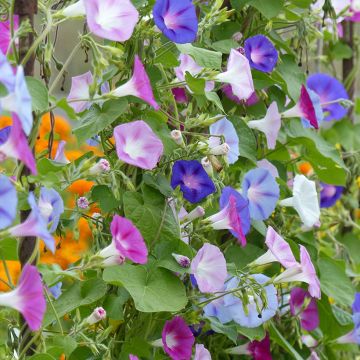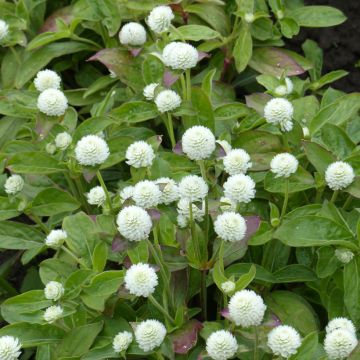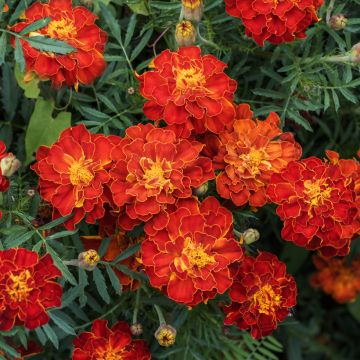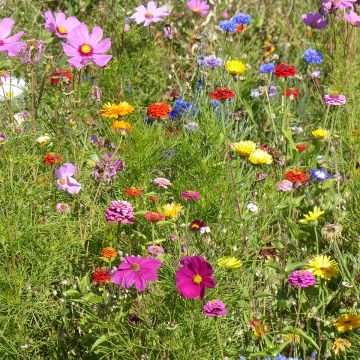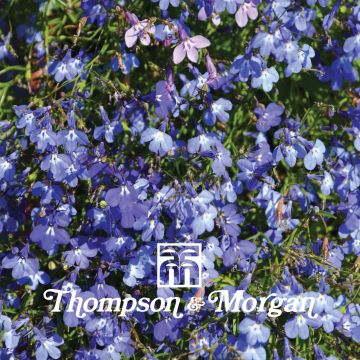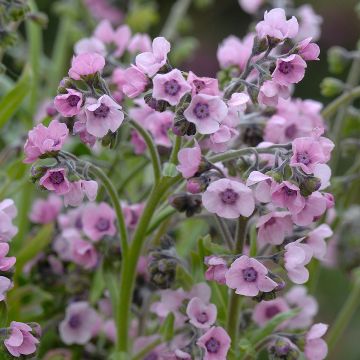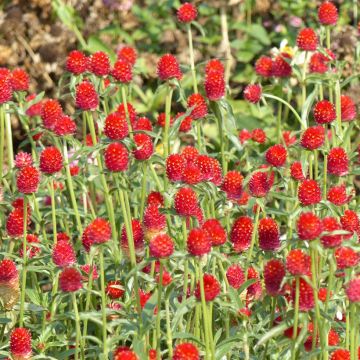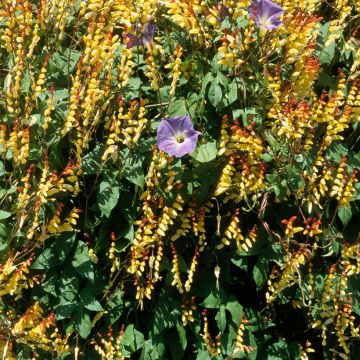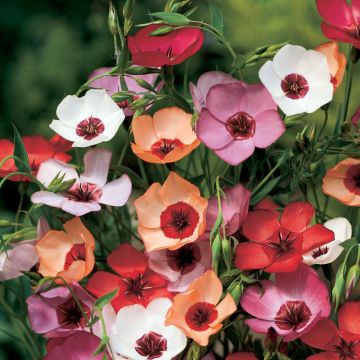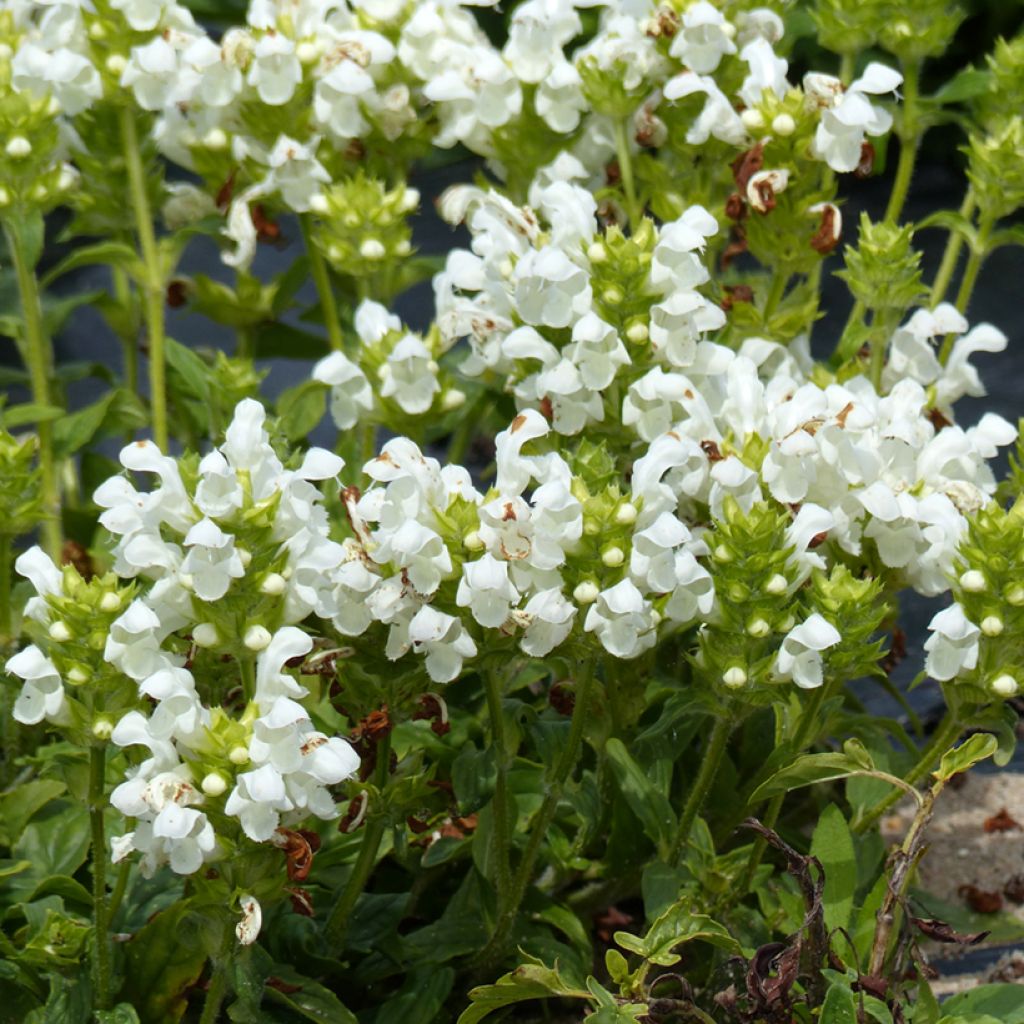

Prunella grandiflora Alba - seeds
Prunella grandiflora Alba - seeds
Prunella grandiflora Alba
This item cannot be shipped to the selected country
Dispatch by letter from €3.90
More information
Schedule delivery date,
and select date in basket
This plant carries a 6 months recovery warranty
More information
We guarantee the quality of our plants for a full growing cycle, and will replace at our expense any plant that fails to recover under normal climatic and planting conditions.
Seed-only orders are dispatched by sealed envelope. The delivery charge for seed-only orders is €3.90.
Does this plant fit my garden?
Set up your Plantfit profile →
Description
Prunella grandiflora 'Alba', also known as white selfheal or large-flowered selfheal, is the white-flowered form of the wild type. This perennial can flower in the year of sowing. Originating from mountainous areas, it is a vigorous and hardy plant that is well-suited for rock gardens and sunny borders. It spreads through creeping stems in moist, even rocky and limestone soils, forming a pleasant semi-evergreen ground cover in winter.
Prunella grandiflora 'Alba' is a relative of dead nettles (Lamiums), sages, and thymes, belonging to the mint family. It is native to mountainous areas of central and southern Europe, where it can be found growing on limestone soils in fairly dry and rocky environments. This small perennial plant grows from a running root, producing climbing or erect stems that root at the nodes when in contact with the ground. It forms a spreading, branched basal tuft, reaching a height of 20 cm and slowly spreading over a minimum of 80 cm over time. Flowering occurs from May to August, approximately 100-150 days after sowing, depending on the sowing date. The plant produces compact spikes of pure white flowers, measuring 2 cm wide, prominently above its foliage. The leaves are ovate, hairy, 3 cm wide, petiolate, entire or toothed, strongly ribbed, and a beautiful dark green. They partially persist in winter.
Prunella grandiflora 'Alba' is perfect as a ground cover, in borders, rock gardens, as well as in containers and pots. The only requirement for successful cultivation is soil that is not too dry and well-drained. It thrives in sunny or partially shaded locations. It can be paired with alpine plants such as androsaces, erodiums, or Geranium cinereum.
Report an error about the product description
Flowering
Foliage
Plant habit
Botanical data
Prunella
grandiflora
Alba
Lamiaceae
Brunelle à grandes fleurs blanche, Brunelle à grandes fleurs Alba
Southern Europe
Other Flower seeds
Planting and care
Sow the Prunella from January to April.
Sow on the surface of a good moist compost, in pots or trays. Lightly cover the seeds with a pinch of vermiculite. Place in a propagator or warm location and keep at a temperature between 18-21 °C. After sowing, do not exclude light as it promotes germination. Keep the surface of the substrate moist, but not waterlogged; germination usually takes 14 to 21 days.
When the seedlings are sufficiently developed, transplant them into 7.5 cm pots or trays. Allow them to gradually acclimatise to outdoor conditions for several weeks before planting them out, once all risk of frost has passed. Space them 30 cm apart when planting, or use pots and containers.
Cultivation:
Prunella prefers fairly moist, well-drained soil and a sunny or partially shaded exposure. It prefers light soils, rich in organic matter, and requires constant moisture in summer. It does not tolerate drought well during the flowering period. Remove faded flower spikes after flowering (plants readily self-seed but lose the characteristics of the variety). When they cover the ground over large areas, plants can be trimmed after flowering to remove unsightly flower spikes and maintain a neat habit.
Sowing period
Intended location
This item has not been reviewed yet - be the first to leave a review about it.
Haven't found what you were looking for?
Hardiness is the lowest winter temperature a plant can endure without suffering serious damage or even dying. However, hardiness is affected by location (a sheltered area, such as a patio), protection (winter cover) and soil type (hardiness is improved by well-drained soil).

Photo Sharing Terms & Conditions
In order to encourage gardeners to interact and share their experiences, Promesse de fleurs offers various media enabling content to be uploaded onto its Site - in particular via the ‘Photo sharing’ module.
The User agrees to refrain from:
- Posting any content that is illegal, prejudicial, insulting, racist, inciteful to hatred, revisionist, contrary to public decency, that infringes on privacy or on the privacy rights of third parties, in particular the publicity rights of persons and goods, intellectual property rights, or the right to privacy.
- Submitting content on behalf of a third party;
- Impersonate the identity of a third party and/or publish any personal information about a third party;
In general, the User undertakes to refrain from any unethical behaviour.
All Content (in particular text, comments, files, images, photos, videos, creative works, etc.), which may be subject to property or intellectual property rights, image or other private rights, shall remain the property of the User, subject to the limited rights granted by the terms of the licence granted by Promesse de fleurs as stated below. Users are at liberty to publish or not to publish such Content on the Site, notably via the ‘Photo Sharing’ facility, and accept that this Content shall be made public and freely accessible, notably on the Internet.
Users further acknowledge, undertake to have ,and guarantee that they hold all necessary rights and permissions to publish such material on the Site, in particular with regard to the legislation in force pertaining to any privacy, property, intellectual property, image, or contractual rights, or rights of any other nature. By publishing such Content on the Site, Users acknowledge accepting full liability as publishers of the Content within the meaning of the law, and grant Promesse de fleurs, free of charge, an inclusive, worldwide licence for the said Content for the entire duration of its publication, including all reproduction, representation, up/downloading, displaying, performing, transmission, and storage rights.
Users also grant permission for their name to be linked to the Content and accept that this link may not always be made available.
By engaging in posting material, Users consent to their Content becoming automatically accessible on the Internet, in particular on other sites and/or blogs and/or web pages of the Promesse de fleurs site, including in particular social pages and the Promesse de fleurs catalogue.
Users may secure the removal of entrusted content free of charge by issuing a simple request via our contact form.
The flowering period indicated on our website applies to countries and regions located in USDA zone 8 (France, the United Kingdom, Ireland, the Netherlands, etc.)
It will vary according to where you live:
- In zones 9 to 10 (Italy, Spain, Greece, etc.), flowering will occur about 2 to 4 weeks earlier.
- In zones 6 to 7 (Germany, Poland, Slovenia, and lower mountainous regions), flowering will be delayed by 2 to 3 weeks.
- In zone 5 (Central Europe, Scandinavia), blooming will be delayed by 3 to 5 weeks.
In temperate climates, pruning of spring-flowering shrubs (forsythia, spireas, etc.) should be done just after flowering.
Pruning of summer-flowering shrubs (Indian Lilac, Perovskia, etc.) can be done in winter or spring.
In cold regions as well as with frost-sensitive plants, avoid pruning too early when severe frosts may still occur.
The planting period indicated on our website applies to countries and regions located in USDA zone 8 (France, United Kingdom, Ireland, Netherlands).
It will vary according to where you live:
- In Mediterranean zones (Marseille, Madrid, Milan, etc.), autumn and winter are the best planting periods.
- In continental zones (Strasbourg, Munich, Vienna, etc.), delay planting by 2 to 3 weeks in spring and bring it forward by 2 to 4 weeks in autumn.
- In mountainous regions (the Alps, Pyrenees, Carpathians, etc.), it is best to plant in late spring (May-June) or late summer (August-September).
The harvesting period indicated on our website applies to countries and regions in USDA zone 8 (France, England, Ireland, the Netherlands).
In colder areas (Scandinavia, Poland, Austria...) fruit and vegetable harvests are likely to be delayed by 3-4 weeks.
In warmer areas (Italy, Spain, Greece, etc.), harvesting will probably take place earlier, depending on weather conditions.
The sowing periods indicated on our website apply to countries and regions within USDA Zone 8 (France, UK, Ireland, Netherlands).
In colder areas (Scandinavia, Poland, Austria...), delay any outdoor sowing by 3-4 weeks, or sow under glass.
In warmer climes (Italy, Spain, Greece, etc.), bring outdoor sowing forward by a few weeks.

































